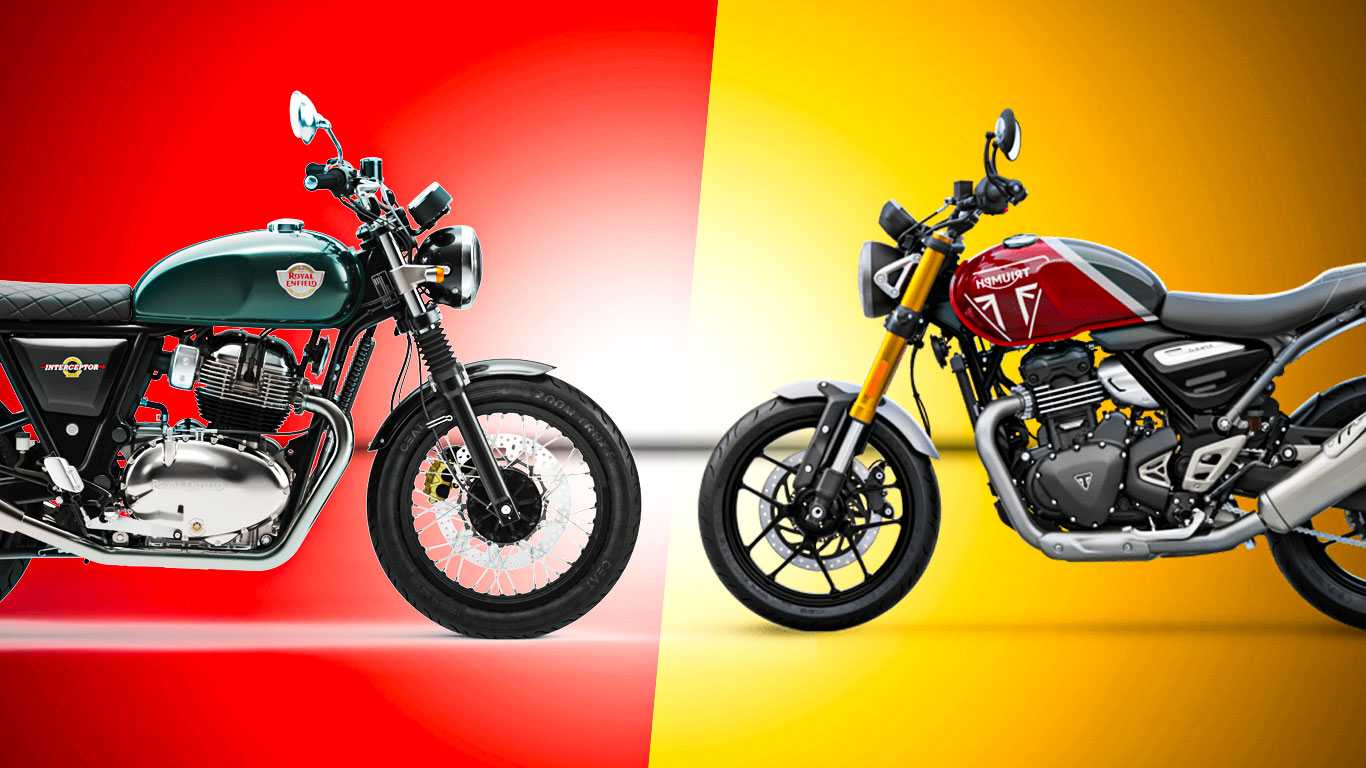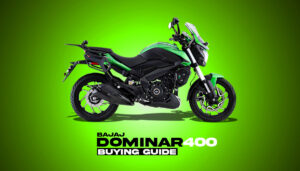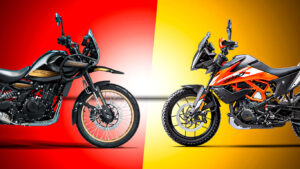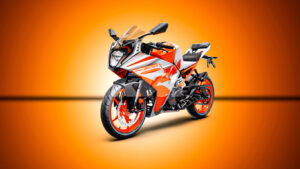The Royal Enfield Interceptor 650 and the Triumph Speed Twin 400 are two of the most popular middleweight retro-styled motorcycles on sale in India today. With similar old-school styling but significant differences under the skin, many interested buyers find it confusing when it comes to picking one over the other.
This comprehensive comparison aims to explore every aspect of both bikes – right from pricing and specifications to real-world performance, ownership experience as well as long term livability. Read on as we help you decide whether the Royal Enfield Interceptor 650 or Triumph Speed Twin 400 better suits your specific needs and expectations from a retro motorcycle.
Interceptor 650 vs Speed 400 – At a Glance Comparison
Before going in-depth, let’s briefly look at some key specs and pricing:
| Royal Enfield Interceptor 650 | Triumph Speed Twin 400 | |
|---|---|---|
| Price (On-road estimate) | Rs 2.65 Lakhs | Rs 3 Lakhs |
| Engine Displacement | 648cc | 399cc |
| Max Power | 47 hp @ 7150 RPM | 37 hp @ 10,750 RPM |
| Peak Torque | 52 Nm @ 4000 RPM | 34 Nm @ 5950 RPM |
| Wet Weight | 202 kgs | 166 kgs |
| Seat Height | 804 mm | 765 mm |
First off, the Interceptor 650 retails cheaper by almost Rs 35,000 over the Triumph Speed 400 in India. But the British motorcycle offers significantly lower ownership costs thanks to modern tech like liquid-cooling.
You also get noticeably more peak power and torque from the larger displacement Royal Enfield. And aptly, the Interceptor 650 weighs in at 202 kgs with a full tank of gas – a whole 36 kgs more than the fairly lightweight Speed Twin.
Seat heights on both bikes are approachable for average sized Indian riders. But the Triumph has a slightly lower perch that aids maneuverability.
So on paper, the spec sheets reveal that the Interceptor 650 trounces the Speed 400 for engine performance. But the Triumph claws back advantage with its lighter weight.
Let’s now analyze how these numbers translate into the real world.
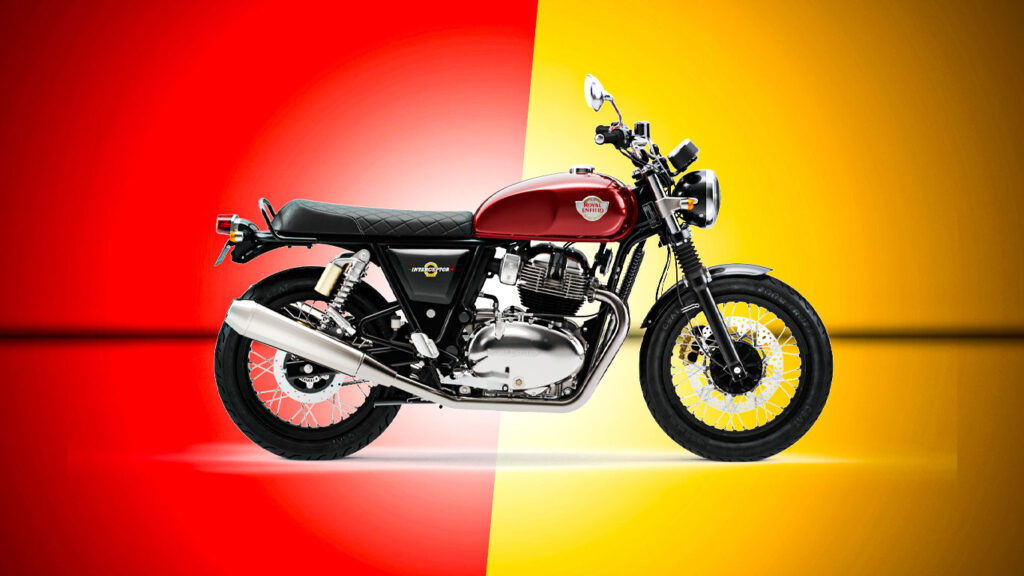
Retro Styling – Which One Does it Better?
A retro roadster somehow transcends rational analysis – you just like the way it looks or you don’t! So does the Interceptor 650 or Speed 400 take the cake when it comes to making your heart race faster?
The Royal Enfield Interceptor 650
Robust proportions featuring that iconic, teardrop shaped fuel tank swollen with pride…the Interceptor 650 is a handsome looking motorcycle from every angle.
An important hallmark of a true-blue retro bike is how well it disguises modern components under classic cosmetic cladding. And Royal Enfield scores high in this regard. Notice how deftly the side panels conceal the generous air-oil cooling setup.
The circular LED headlamp has an old-school nacelle mounted ring and chrome bezel adding a delicate touch of class. No garish detailing here – just simple, clean lines that reminisce 1960’s British motorcycles.
The single upholstered saddle oozes style while a neatly integrated luggage rack at the rear completes the quintessential roadster look.
To top it off, Royal Enfield offers the Interceptor 650 in a tasteful single tone color palette featuring a lustrous Chrome variant alongside color-matched wheels and subtle chrome accents.
The Triumph Speed Twin 400
In the custom motorcycle scene globally, Triumph enjoys an almost unassailable reputation thanks to a litany of good looking, spirited and fun classics over multiple decades.
The contemporary Speed 400 carries forth that bloodline injecting British finesse into its deliciously curvaceous form. Make no mistake – the swooping lines have a tinge of feminine beauty almost bordering on sensuality with an almost impish character.
Attention to minute details stand out everywhere lending the Speed 400 an air of sophisticated elegance. Just trace the neatly executed exhaust heat shield or the brushed aluminium bezel adorning the headlamp.
Triumph also pampers customers with a wider choice in personalization. A dual-tone color scheme gives it a racier edge. You can opt for a more premium color palette and maneuverability enhancing low handlebar option. The alloy wheels feature red or silver pinstriping based on your paint job.
There are some carefully crafted premium bits on offer like bar end mirrors available as accessories too.
So if given a choice based purely on visual appeal and customization possibilities – our vote tilts slightly towards the oh-so-gorgeous Triumph Speed 400! Its finer nuances and flair reflect a depth of character that escapes the Royal Enfield.
But the Interceptor 650 too tugs at our heart strings with a chiselled, masculine allure and road presence on its own regard.
What about reliability and build quality though? Read on…
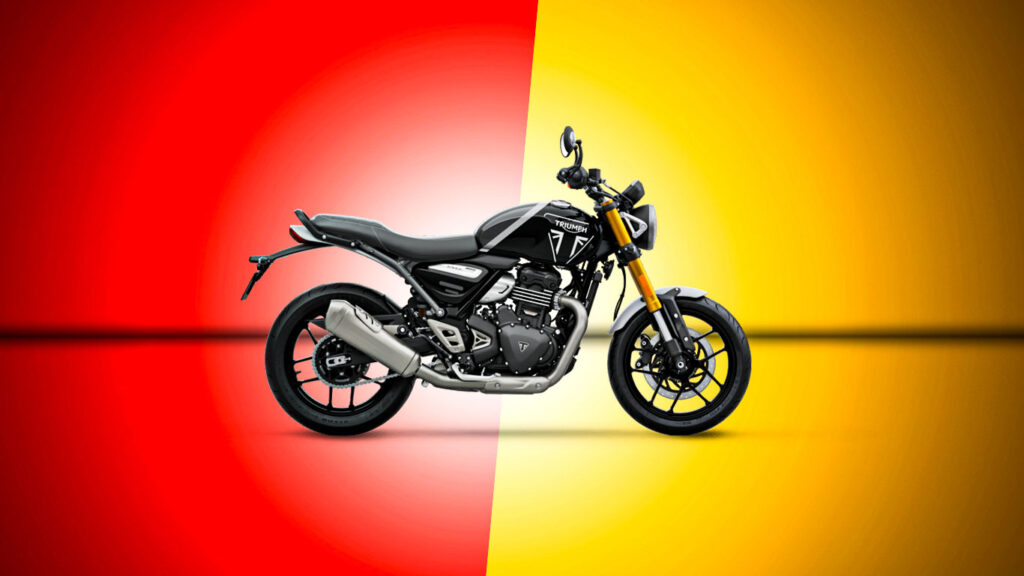
Build Quality and Ownership Experience Comparison
Considering the Royal Enfield Interceptor 650 and Triumph Speed 400 retail in the mid-size segment, buyers expect good build quality with reasonable ownership costs. Especially when these motorcycles try luring customers purely on an emotional appeal without big performance claims or cutting edge technology.
So does the Interceptor 650 or Triumph 400 tip the scales when it comes to product quality, after-sales support and overall ownership experience?
Royal Enfield Interceptor 650 – Long Term Reliability?
The Interceptor 650 represents a brand branching out from a spotty reputation regarding quality control and reliability. And we must applaud Royal Enfield for taking criticism on the chin to deliver better craftsmanship.
The Interceptor 650 does reflect a major shift showing improved fit-finish levels with paint quality mostly untarnished by the usual niggles that used to plague Royal Enfields.
The switchgear feels built to last while chassis components appear properly treated for enhanced corrosion resistance. Little touches like lockable fork caps hint at a manufacturer finally sweating details…well mostly!
And the 650cc engine itself borrows technology proven on millions of Royal Enfield cast iron engines over decades. So expect a good slab of mechanical reliability. Parts support should not pose much headache either.
Considering the widespread Royal Enfield sales network, finding competent service support for the Interceptor 650 may not be too challenging even in remote Indian towns.
So while the Interceptor 650 offers improved quality over Royal Enfields of the past, it still does not match global benchmarks. Expect a few gremlins to creep in as the odometer starts winding upwards. But nothing that regular upkeep won’t rectify.
Triumph Speed 400 – True Global Standards?
As the only major full range British motorcycle marquee left rolling off assembly lines globally, Triumph has painstakingly crafted machines meeting quality standards that buyers in Europe and America expect as baseline.
The Triumph Speed 400 may be manufactured in Thailand to meet a cost target. But vastly improved outsourcing processes, strict supervision and modern production techniques ensure superb quality levels – often still exceeding what mass market Japanese competition offers across segments.
From the exquisite paint finish to tolerance levels of mating chassis parts, the Speed 400 gives little cause of complaint. Triumph has engineered reliability into the 399cc engine from ground up leveraging on capabilities honed over decades.
Being a smaller displacement liquid-cooled parallel twin with fuel injection, service costs should stay manageable compared to its legacy air-cooled or bigger multi-cylinder cousins.
However, the challenge for many buyers in India could be the limited sales and service network Triumph operates currently. But you can expect dealer staff to adhere to professional standards of global retailers.
So if you prioritize quality, reliability and after-sales experience over everything else – the Triumph Speed 400 almost emerges as a default choice in this comparison test.
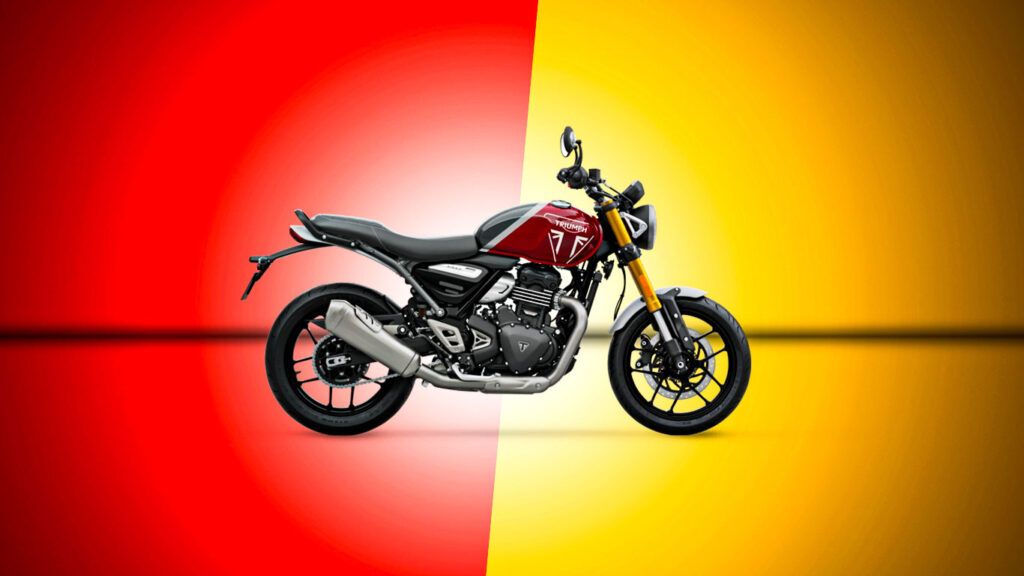
Engines and Performance Analysis
While aesthetics may delight the heart, its the engine performance often proves decisive for riding enjoyment over years of ownership. So how do the mills powering the Interceptor 650 and Speed 400 fare? Which one delivers a more wholesome real world experience?
Royal Enfield Interceptor 650 Engine
The air/oil-cooled 648cc parallel twin powering the Interceptor 650 stems from a 4-valve SOHC 500cc design Royal Enfield has manufactured for years. Engineering enhancements like balancer shafts, electronic fuel injection and an assist slipper clutch prepare this proven motor for modern duty.
With a meaty midrange punch starting from as low 2000 RPM upwards, overtaking slower traffic never calls for excessive gear-rowling. Just roll on the throttle mildly and the Interceptor gathers speed with measured haste – hitting three digit speeds without much fuss while retaining considerable overtaking reserves.
This unstressed nature means vibration levels stay controlled letting you munch miles at 90-100 km/h rpm levels quite comfortably. Hitting an indicated 140 km/h on the speedo for brief spurts seems plausible without unduly raising your heart rates.
It’s this flexibility mated to a relaxed output best experienced rather than quoting peak horsepower numbers that defines the Interceptor’s charm. The throaty bass from its side-mounted twin exhaust adds aural pleasure too.
Gear shift action remains positive while light, progressive clutch lever action reduces strain in chaotic urban work.
So while by no means a fast motorcycle, the Interceptor 650 excels in the often overlooked virtue of user-friendly power delivery – exactly what classic roadsters promises.
Triumph Speed 400 Engine
Slotting into Triumph’s new category of ‘Modern Classics’, the Speed 400 needs meeting slightly different expectations than its British marquee’s name usually demands. More accessible performance and running costs get balanced against emotional appeal.
Hence rather than wielding a fire-breathing multi cylinder mill, Triumph equips it with a modestly tuned 399cc inline twin to produce a competitive 37 hp.
This modern DOHC 8-valve motor features four valves per cylinder with liquid-cooling, ride-by-wire electronic throttle control and slick 6-speed gearbox working in tandem for consistent response.
With peak torque limited to 34 Nm delivered closer to 6000 RPM, progress requires working the slick gearbox charging up the rev range regularly. Tractable power ensures the Speed 400 ambles around town nicely. Open roads though ask for concerted downshifting to make rapid progress.
Vibes stay controlled thanks to the twin balance shafts while heat dissipation shouldn’t pose issues either. The slick throttle response adds to the Speed 400’s friendly road manners.
It’s only when chasing top speeds that the limited peak power shows up, with our test top speed hovering slightly above the 120 km/h mark.
So in essence, the Speed 400 trades outright performance for modern finesse and features. Not slow by any stretch but not rip-roaring quick either. Enthusiasts may be left longing for extra punch.
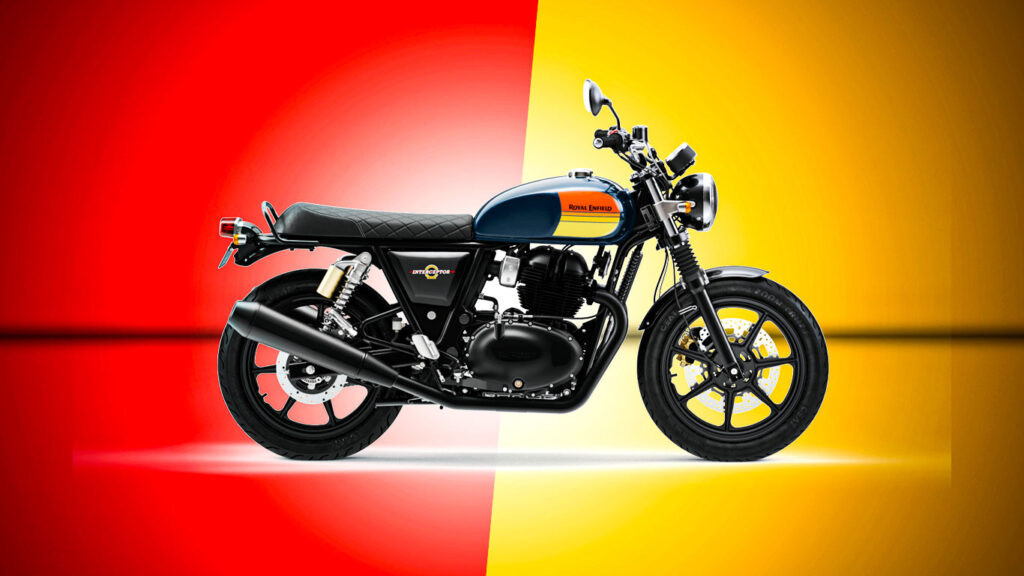
Handling and Ride Dynamics
While a bulk of retro motorcycles simply rely on straight line performance to deliver thrills, sound handling traits contribute tremendously towards riding enjoyment especially among experienced bikers.
So how adept are the Interceptor 650 and Speed 400 to slicing up REAL world roads? Can they carry appreciable corner speeds or are best limited to cruise duties alone?
Royal Enfield Interceptor 650 Dynamics
With a comfortable upright riding posture and wide handlebars offering plenty of leverage, hustling the Interceptor 650 along twisties proves easier than its proportions suggest.
A 19 inch front wheel shod with chunky 100 section Pirelli rubber offers confident grip when tipped in leaning into turns. The chassis responds best to smooth direction changes though rather than abrupt transitions.
While the suspension and overall weight tempers extreme cornering ambitions, an expert rider can still carry appreciable speeds riding within its composure zone. The Interceptor feels lively and poised without getting unsettled over undulating surfaces – just don’t expect radical lean angles.
Braking performance from the single 320mm front disc is adequate for this class. Add in the surefooted feel aided by the fatter profile tires, and most owners will find the dynamic abilities sufficient for touring duties with occasional backroad blasts hassle free.
So as an overall package, the Interceptor 650 puts up balanced handling manners capable of occasional corner carving but excels more at comfortable cruising – just as you expect from a retro roadster.
Triumph Speed 400 Ride and Handling
If stylish motorcycles could proclaim their dynamic capabilities just by visuals alone – one glance at the Speed 400 confirms Triumph engineers indeed lavished time perfecting handling and ride quality.
The sporty ergonomics lend themselves naturally towards enthusiastic riding. Compared to traditional Bonneville sibling, a more aggressive rake, trail and slightly steeper steering geometry sees the Speed 400 almost impatiently drop into turns the moment you initiate direction changes.
And despite cast wheels shod with tubeless Avon Roadrider rubber, the lightweight chassis shows an eagerness missing on the portlier Interceptor 650. Lean angles keep progressively increasing with corner speeds – aluminium side stand grinding only arriving after serious efforts!
Both ends feature Showa-sourced suspension components that work admirably in managing compression despite the lack of adjustability. Overall ride quality feels taut with a hint of firmness – enough to feel surface imperfections but without harshness.
Dual 320mm discs offer strong, bitey braking power with two-piston calipers. ABS intervention too proves unobtrusive even under hard braking into corners. Switch the ABT off for some tail-out antics!
Overall the Speed 400 chassis setup leaves you smiling ear to ear after an entertaining ride down your favourite winding stretch. It changes direction with delightful nimbleness belying its near 200 kilo heft. The communicative feel and poise encourages stretching its thoroughly modern chassis to the brink for maximum enjoyment.
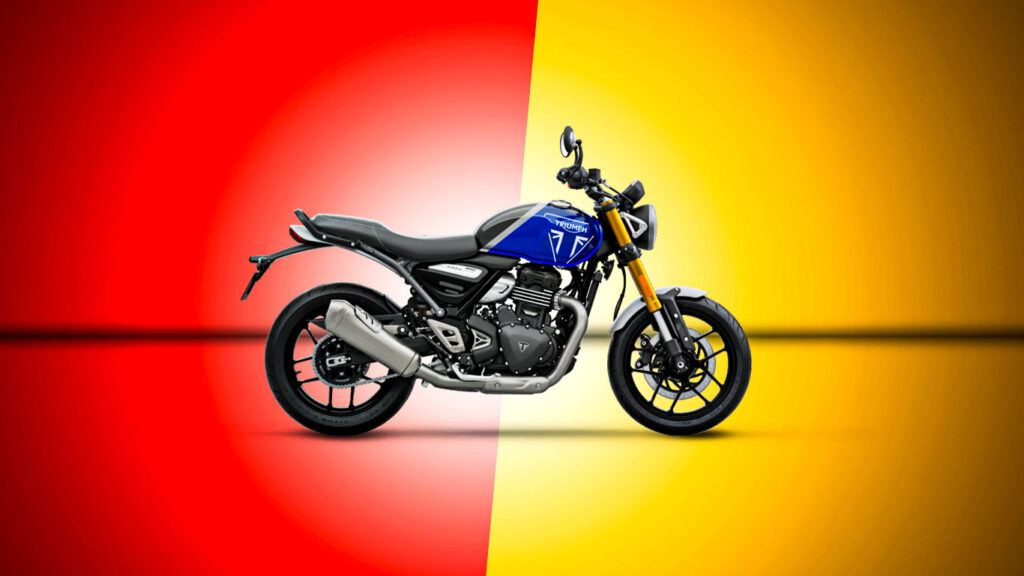
Which One Should You Buy – Interceptor 650 or Speed 400?
If you’ve made it this far in our mega comparison review, pat yourself on the back for your patience!
So let’s try simplifying your buying decision between the Royal Enfield Interceptor 650 and Triumph Speed 400:
Buy the Interceptor 650 If:
- You want a friendly, easy to ride all-rounder retro classic capable of comfortable cruising yet able to handle occasional backroad blasts or long tours
- Seek a torquey engine with loads of character that creates memorable riding experience
- Require retro styling that turns heads effortlessly with macho appeal
- Wish to customise or modify your bike later to stand out from the herd
- Want after-sales support even in small towns thanks to Royal Enfield’s network
Choose the Speed 400 If:
- Lightweight manoeuvrability and sporty dynamics are key priorities
- Expect higher build quality and mechanical refinement
- Appreciate gorgeous contemporary styling with premium finishing
- Willing to pay extra for sophisticated engineering and slick powertrain
- Plan to keep costs low leveraging Triumph quality and modern engine
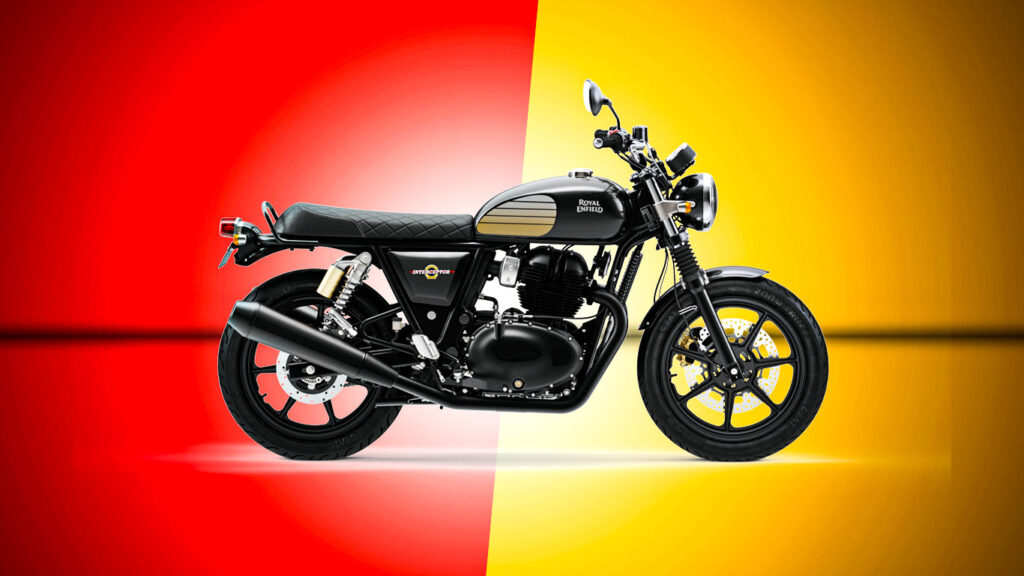
So while both motorcycles have unique strengths catering to slightly different buyer priorities – the Royal Enfield Interceptor 650 makes a case for itself as an endearing all-round retro roadster.
The Interceptor manages to fuse classic appeal with modern rideability in a highly convincing package – thus walking away with the win in this comparison test!
Hopefully our detailed analysis has armed you with facts to decide whether the Royal Enfield Interceptor or Triumph Speed 400 better fits your requirement list when the heart falls for retro charm.
Happy Motorcycling!

